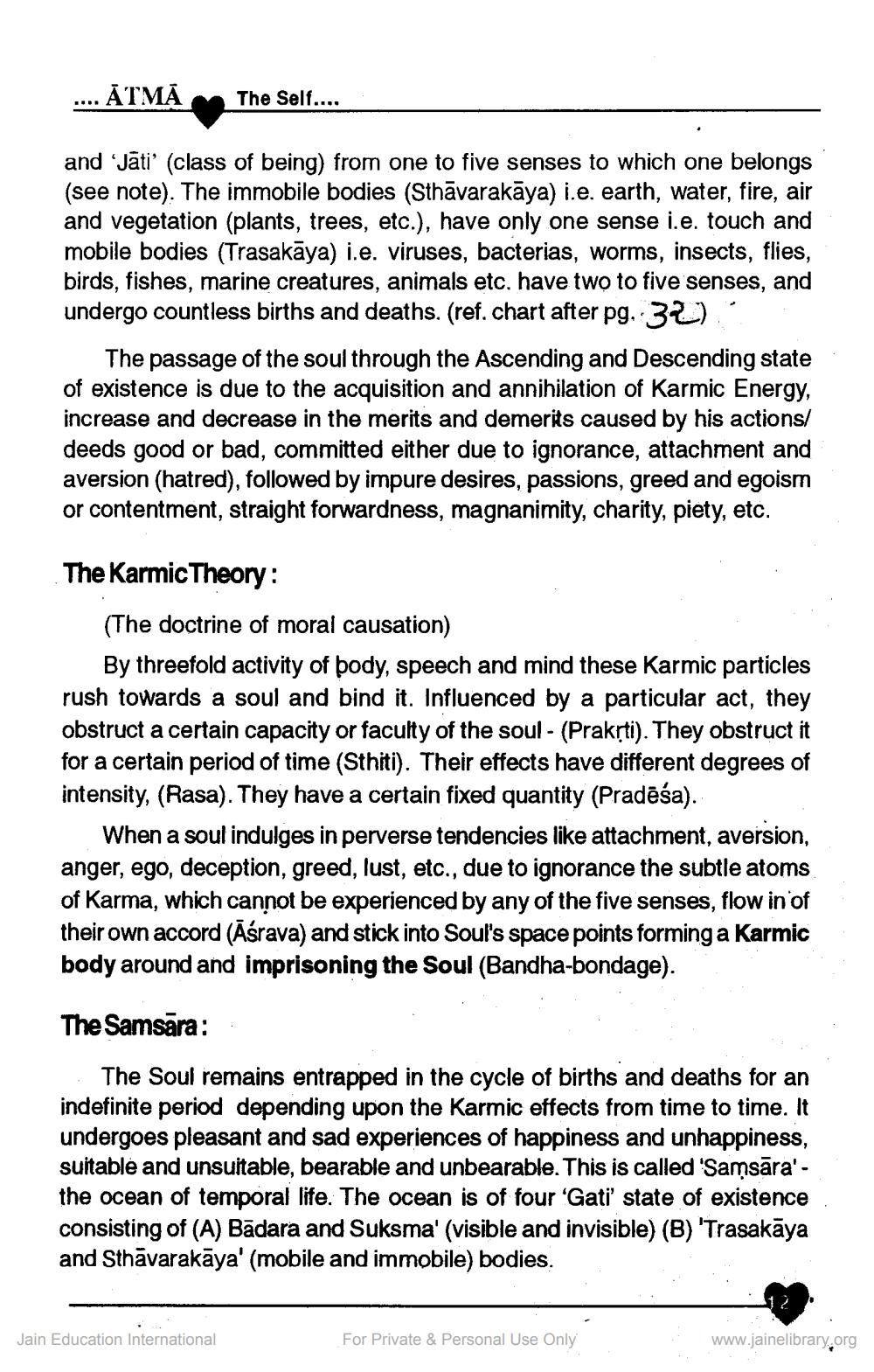________________
.... ĀTMĀ
The Self....
and 'Jāti’ (class of being) from one to five senses to which one belongs (see note). The immobile bodies (Sthāvarakāya) i.e. earth, water, fire, air and vegetation (plants, trees, etc.), have only one sense i.e. touch and mobile bodies (Trasakāya) i.e. viruses, bacterias, worms, insects, flies, birds, fishes, marine creatures, animals etc. have two to five senses, and undergo countless births and deaths. (ref. chart after pg. 30)
The passage of the soul through the Ascending and Descending state of existence is due to the acquisition and annihilation of Karmic Energy, increase and decrease in the merits and demerits caused by his actions/ deeds good or bad, committed either due to ignorance, attachment and aversion (hatred), followed by impure desires, passions, greed and egoism or contentment, straight forwardness, magnanimity, charity, piety, etc.
The Karmic Theory:
(The doctrine of moral causation)
By threefold activity of body, speech and mind these Karmic particles rush towards a soul and bind it. Influenced by a particular act, they obstruct a certain capacity or faculty of the soul - (Prakrti). They obstruct it for a certain period of time (Sthiti). Their effects have different degrees of intensity, (Rasa). They have a certain fixed quantity (Pradeśa).
When a soul indulges in perverse tendencies like attachment, aversion, anger, ego, deception, greed, lust, etc., due to ignorance the subtle atoms of Karma, which cannot be experienced by any of the five senses, flow in of their own accord (Āśrava) and stick into Soul's space points forming a Karmic body around and imprisoning the Soul (Bandha-bondage).
The Samsāra:
The Soul remains entrapped in the cycle of births and deaths for an indefinite period depending upon the Karmic effects from time to time. It undergoes pleasant and sad experiences of happiness and unhappiness, suitable and unsuitable, bearable and unbearable. This is called Samsāra'the ocean of temporal life. The ocean is of four 'Gati' state of existence consisting of (A) Bādara and Suksma' (visible and invisible) (B) 'Trasakāya and Sthāvarakāya' (mobile and immobile) bodies.
Jain Education International
For Private & Personal Use Only
www.jainelibrary.org




